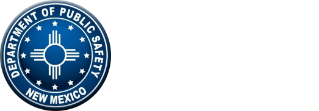Forensic Lab
- NMDPS Home
- Forensic Lab
- LECB
- NMLEA
- NMLEA Events Calendar
- Director's Page
- Basic Police Officer Training (BPOT)
- Certification By Waiver (CBW)
- Public Safety Telecommunicator
- In-Service Training
- Satellite Academies
- Albuquerque Police Department (APD) Training Academy
- Bernalillo County Sheriffs Office (BCSO) Training Academy
- Central New Mexico (CNM) Law Enforcement Academy
- Dona Ana County Sherriff's Office (DASO) Training Academy
- Las Cruces Police Department (LCPD) Training Academy
- New Mexico State Police (NMSP) Training Academy
- San Juan Criminal Justice Authority
- Southeastern New Mexico Law Enforcement
- Western NM University Police Academy
- Forms & Documents
- NM Law Enforcement Standards & Training Council
- NM Law Enforcement Officer Memorial
- NMSP
- Law Enforcement Support Services
- Budget Bureau
- Financial Management Bureau
- Law Enforcement Records Bureau
- Grants Management Bureau
- Programs
- Coronavirus Emergency Supplemental Funding (CESF)
- Community Oriented Policing Services Anti-Methamphetamine Program
- DNA Capacity Enhancement For Backlog Reduction (CEBR) Program
- Edward Byrne Justice Assistance Grant Program
- High Intensity Drug Trafficking Area Program
- Law Enforcement Mental Health and Wellness Act Program
- Motor Carrier Safety Assistance Program (MCSAP)
- NM Sexual Assault Kit Initiative Program
- Paul Coverdell Science Improvement Program
- Post-Conviction Testing of DNA Evidence to Exonerate the Innocent Program
- Prison Rape Elimination Act Program
- Project Safe Neighborhood (PSN)
- Residential Substance Abuse Treatment Program
- Support for Adam Walsh Act Implementation Grant Program
- Traffic Safety
- Victim of Crime Act - Victim Advocacy Program
- Waste Isolation Pilot Plant (WIPP)
- Funding Opportunities
- Grant Guidance and Resources
- Careers
- Programs
- Forensic Laboratory Bureau
- Information Technology
- Equal Employment Opportunity Bureau
- What’s Happening
- Careers

Mission:
The NM DPS Forensic Laboratory exists to promote a safe and secure environment for the State of New Mexico through vital scientific analysis and current, relevant education about forensic analysis for law enforcement and judicial partners.
Who We Are:
NMDPS Forensic Laboratory is an International Organization for Standardization (ISO) / International Electrotechnical Commission (IEC) 17025:2017 American Association for Laboratory Accreditation (A2LA) accredited laboratory (A2LA certificate numbers 4999.01, 4999.02 and 4999.03). Accreditation is a rigorous, voluntary program in which the laboratory demonstrates adherence to established quality standards. The DNA/Biology Unit, in addition to the A2LA accreditation of the Santa Fe Forensic Laboratory (A2LA certificate number 4999.01), maintains accreditation under the Federal Bureau of Investigation (FBI) Quality Assurance Standards (QAS) for DNA Testing Laboratories. The DNA/Biology Unit has been conducting forensic serology/DNA analysis since 1993.
The laboratory provides free forensic analysis to Federal, Tribal, State, and Local law enforcement within the State of New Mexico to approximately 300 agencies. The laboratory’s forensic scientists provide expert witness testimony in federal and state courts throughout New Mexico regarding the scientific analysis performed in criminal cases.
Laboratory Administration:
Forensic Laboratory Initiatives
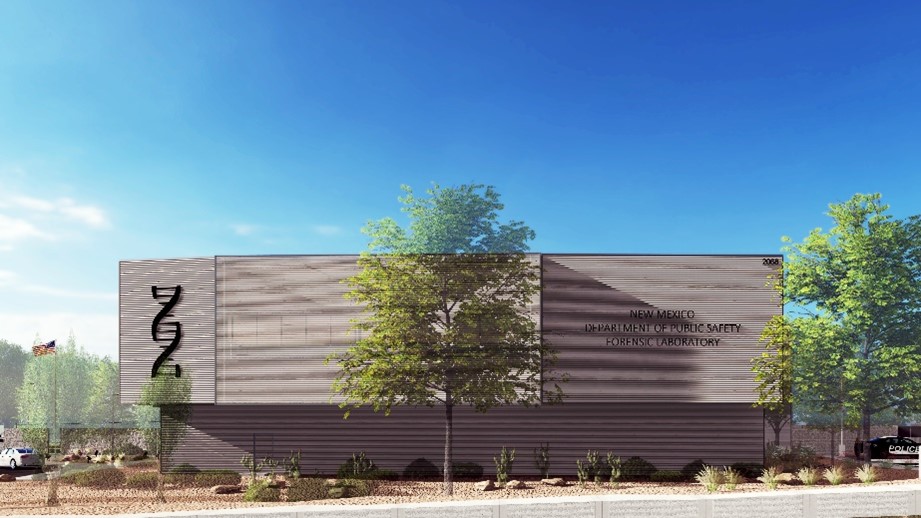
- Press Releases & Articles about the new laboratory
-
- New state DPS forensics lab rises in Santa Fe
- Forensic Lab | Architecture + Design | D/P/S (dpsdesign.org)
- New Mexico begins construction of new state crime lab | KRQE News 13
- New Mexico begins construction of new state crime lab | KOB 4
- Empowering Forensic Science: Santa Fe Lab Project Victorious in 2024 Design Excellence Awards
- Putting People First: Designing the Forensic Lab of the Future
-
- Press Releases about Laboratory Accreditation
- Ribbon Cutting Ceremony for New Forensic Laboratory
- Progress Photos
Subpoenas and Trial Services
Subpoenas for all DPS Forensic Laboratory scientists should be submitted via email to lab.subpoenas@dps.nm.gov; however, they may also be received in-person at one of the three laboratory locations. Subpoenas need to be addressed to a specific scientist. If the scientist’s identity is unknown, please contact lab.subpoenas@dps.nm.gov so that this information can be researched and provided prior to the submission of the subpoena. Please include the corresponding DPS laboratory case number and agency case number, in addition to the court case number, on all subpoenas. Updates on dismissed or continued cases should be emailed to the aforementioned email address
National Institute of Standards and Technology (NIST)
The laboratory is in the process of adopting standards from the Organization of Scientific Area Committees (OSAC) for Forensic Science from its registry of approved standards. This process is the implementation of nationally recognized standards that lend credibility to already implemented quality assurance standards in the laboratory.
Laboratory Recruitment
- Employment Opportunitites with the laboratory here.
- Infographic (QR code training info for universities)
Legislation
House Bill 135 (HB135) – The Sexual Assault Survivor’s Bill of Rights
The Sexual Assault Survivor’s Bill of Rights was passed in 2019 during the 54th legislative session. It requires the forensic laboratory to adhere to strict timelines of processing all Sexual Assault Examination Kits (SAEK) submitted to the laboratory for forensic analysis.
Laboratory Services:
Santa Fe Forensic Laboratory
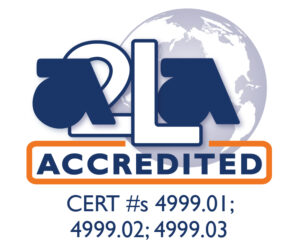 New Mexico’s full-service laboratory offering testing and analysis in the following disciplines:
New Mexico’s full-service laboratory offering testing and analysis in the following disciplines:
-
-
- DNA/Biology
- Latent Prints
- Firearms & Toolmarks
- Controlled Substances
-
Staff Directory/Contact Us
PO Box 1628 Santa Fe, New Mexico 87504-1628
Phone: (505) 827-9137 Fax: (505) 827-3318
Las Cruces Forensic Laboratory
Las Cruces Forensic Laboratory offers testing and analysis in the following disciplines:
-
-
- Controlled Substances
- Methamphetamine Purity Testing
(Federal cases only)
-
Staff Directory/Contact Us
PO Box 2336 Las Cruces, New Mexico 88047-2336
Phone: (575) 541-7580 Fax: (575) 541-7594
Hobbs Forensic Laboratory
 Hobbs Forensic Laboratory
Hobbs Forensic Laboratory
Hobbs Forensic Laboratory offers testing and analysis in the following discipline:
-
-
- Controlled Substances
-
Staff Directory/Contact Us
PO Box 2567 Hobbs, New Mexico 88241-2567
Phone: (505) 383-0560 Fax: (575) 391-1899
WHAT WE DO:
DNA/Biology
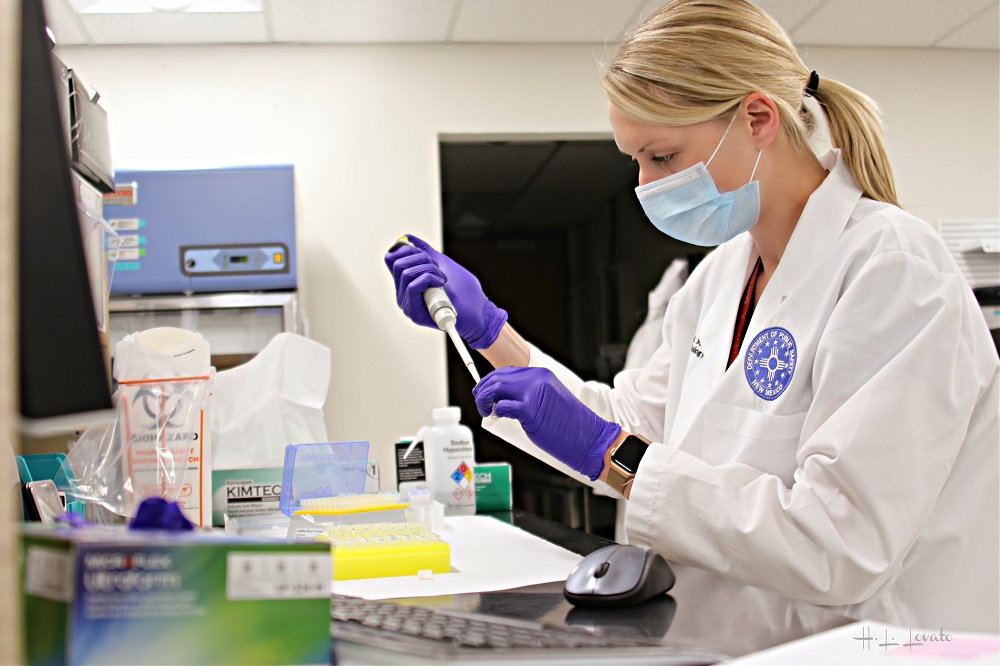
The DNA/Biology Unit utilizes state-of-the-art forensic serological and DNA techniques to routinely identify DNA profiles from minute amounts of human biological material from crime scenes.
Types of services provided by the DNA/Biology Unit include autosomal STR testing (traditional DNA analysis), male Y-STR DNA testing, criminal paternity, and cold cases.
The DNA/Biology Unit Scientists are tasked with examining items of evidence to collect various samples ranging from possible biological fluid (blood, semen, or saliva) to DNA from skin cells left behind. If a DNA profile is obtained from an item of evidence, DNA scientists can compare the evidence DNA profile to a DNA profile from a known individual to determine a source of the DNA profile.
For qualifying DNA profiles from evidence items, DNA scientists may enter the samples into the CODIS database (Combined DNA Index System). CODIS is the Federal Bureau of Investigation’s (FBI) national DNA database, which houses DNA profiles generated from crime scene samples, arrestees, and convicted offenders, among others. As a forensic DNA testing laboratory, the lab only enters forensic evidence samples. For questions regarding any offender or arrestee samples, questions should be directed to the New Mexico DNA Identification System located at the Albuquerque Metropolitan Forensic Science Center at (505)980-4732.
The CODIS database blends forensic science and computer technology into an effective tool for solving crimes by enabling federal, state, and local laboratories to exchange and compare DNA profiles electronically, thereby linking crimes to each other and to arrestee/convicted offenders.
Latent Prints
The Latent Print examiners apply scientific means to process evidence from criminal investigations, for the presence of latent (invisible) and patent (visible) finger and palm prints. Prints are developed and/or enhanced using various powders, chemical, and illumination techniques.
These prints are then visually compared to known inked fingerprints of a suspect or victim, or prints entered in the Automated Fingerprint Identification System, (AFIS). AFIS is a computer database which enables unidentified latent prints, recovered from crime scenes or evidence, to be compared with over 700,000 fingerprint or palm print records from known individuals within the database.
By successfully identifying the source of a print or linking prints between crimes, important investigation information can be developed.
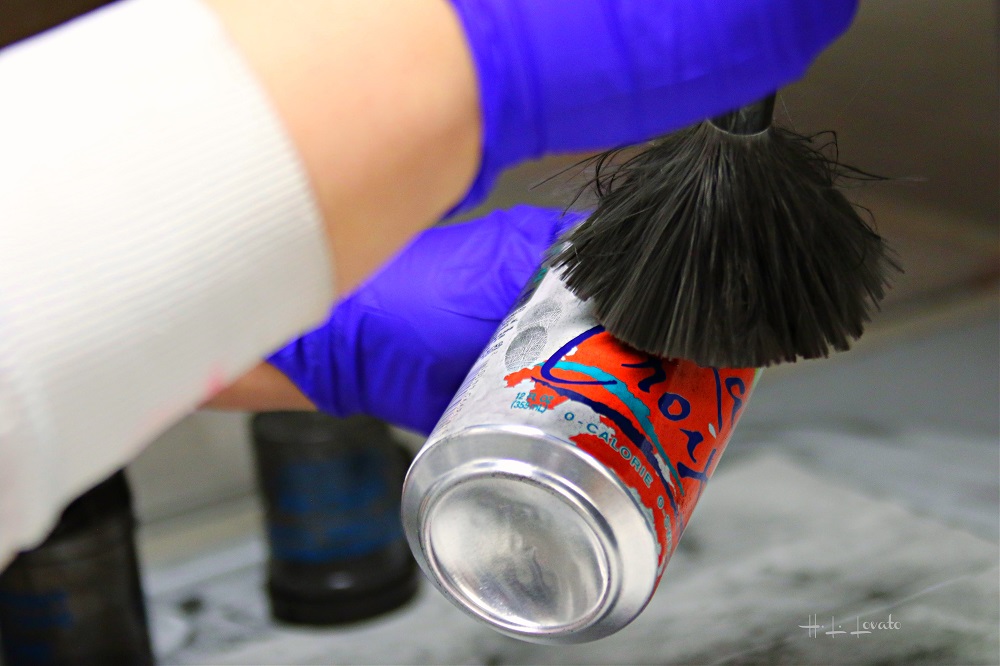
Firearms/Toolmarks
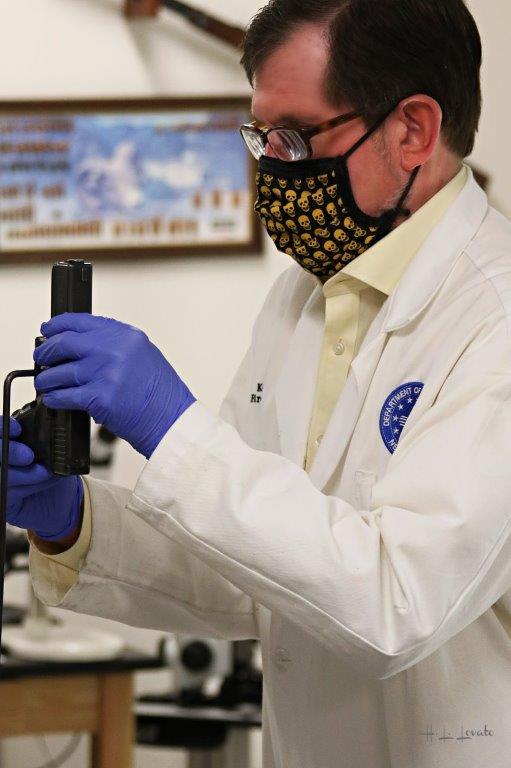 Forensic firearms analysis involves the microscopic comparison of bullets, cartridge cases, and/or other ammunition components to make associations as having been fired by or cycled through a particular firearm.
Forensic firearms analysis involves the microscopic comparison of bullets, cartridge cases, and/or other ammunition components to make associations as having been fired by or cycled through a particular firearm.
Similar techniques are used in the examination of suspect tool marks made by typical hand tools (screwdrivers, bolt cutters, etc.).
Chemical applications and other methods are used to attempt the restoration of serial numbers, usually on firearms.
The unit also provides fracture match comparisons and ejection pattern testing.
Lastly, the examination of a shooting victim’s clothing may reveal a range of distance that the bullet was fired from. The firearm in question is required for this analysis. Any live ammunition that is recovered should also be submitted.
Controlled Substances
Using chemical and instrumental analyses, the forensic scientists identify the presence of controlled substances in submitted evidence.
Common evidence generally consists of assorted powders, crystals, tablets, capsules, liquids, or plant materials.
Scientists utilize a battery of screening chemical and chromatographic tests to determine whether controlled substances may be present in items submitted as evidence.
Positive identifications of controlled substances are achieved using Fourier transform infrared (FTIR) detector spectroscopy and Gas Chromatography – Mass Spectrometry (GC-MS).
The predominant drugs submitted are methamphetamine, fentanyl, cocaine, and heroin.
If you have any forensic analysis questions, please contact the appropriate unit technical leader.
FIREARMS/TOOLMARK UNIT:
Kevin Streine, Forensic Technical Leader 505-365-3116
DNA/BIOLOGY UNIT:
Corinne Byrdsong, Interim Forensic Technical Leader 505-919-9956
LATENT PRINTS UNIT:
Bonnie Knoll, Forensic Technical Leader 505-699-6006
CHEMISTRY UNIT:
Andrew Barber, Forensic Technical Leader 575-541-7584
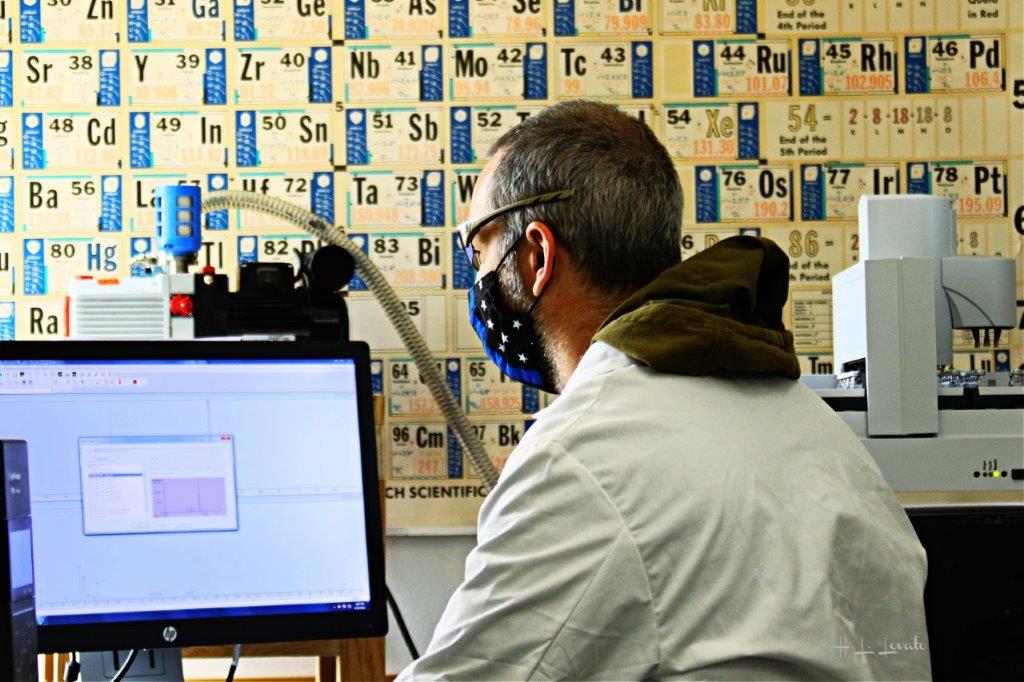
FAQs
What services are NOT provided?
-
-
- The testing of liquids*
-
- Toxicological testing (including blood alcohol testing)
- Blood and urine from Drug Facilitated Sexual Assault (DFSA) kits
-
-
Fire Debris/Arson**
-
National Integrated Ballistics Information Network (NIBIN)***
-
Mitochondrial DNA Testing
-
Investigative Genetic Genealogy
- The testing of liquids*
-
*For information about toxicological testing, including blood alcohol testing, please visit the NM Scientific Laboratory Division (SLD). Please contact the SLD for instructions on how to submit urine and blood collected in Drug Facilitated Sexual Assault (DFSA) kits.
**COMING 2023/2024 – Fire Debris/Arson testing to take place in the Las Cruces Forensic Laboratory.
***NIBIN UPDATE – NIBIN was transferred from the Forensic Laboratory to the NMSP effective June 1, 2022. Please see details below and ensure all evidence submitted in firearms cases that require Latent Print and / or DNA analysis are submitted to the lab prior to NMSP. On June 1, 2022, the National Integrated Ballistics Information Network (NIBIN) was transferred from the Santa Fe Forensic Laboratory to the New Mexico State Police (NMSP).
The NIBIN Program has been identified as an investigative tool rather than a forensic tool; therefore, this transition was made with program oversight by the Bureau of Alcohol, Tobacco, Firearms and Explosives (ATFE).
The Forensic Laboratory Bureau will continue to provide the same level of service in the Firearms Unit, other than NIBIN entry. Please be advised that you will need to contact the New Mexico State Police (NMSP) for updated program information nibin.program@dps.nm.gov / Lieutenant Richard Mathews of the NMSP Investigations Bureau Technical Unit at (505) 681-2848, or Intel Investigator Rosa Manning (505) 382-1213, or the on-call intel unit (505) 999-0869.
It is imperative that any evidence in any case requiring latent print and / or DNA analysis is sent to the Forensic Laboratory prior to your agency sending it to the NMSP for NIBIN entry.
How long does it take to complete a single case?
Because each case is unique and the laboratory has many cases at a given time, the time needed to complete each case will vary.
Any case that requires an expedited or rush analysis should be communicated to the laboratory to the appropriate discipline’s supervisor.
Does the laboratory offer tours?
Please email forensic.lab@dps.nm.gov
Does the laboratory have an internship program?
The laboratory continuously explores opportunities to facilitate future interest in forensic science. Please email forensic.lab@dps.nm.gov
When can I submit evidence to the laboratory?
The NMDPS Forensic Laboratories Bureau’s evidence units remain open Monday through Friday between the hours of 8am to 12pm, are closed for lunch, and reopen from 1pm to 5pm. Officers may submit evidence to the laboratories during the listed hours of operation. You can also call evidence unit to make an appointment to submit evidence.
- Santa Fe Evidence Unit (By Appointment Only – until further notice):
505-827-9132 - Las Cruces Evidence Unit:
575-541-7580 - Hobbs Evidence Unit:
505-383-0560
How many cases can I submit at one time?
The laboratory’s policy limits agencies to twenty (20) cases per day.
How should I package evidence that I need to submit?
- Firearms should NEVER be submitted to the laboratory loaded. In the event a problem exists with a firearm regarding the functionality or safety, please call the Firearms Unit for assistance or guidance. 505-827-9151
- Clothing and items that have been saturated with blood or other bodily fluids should be thoroughly dried prior to packaging.
- Paper packaging is ideal for most submissions to the laboratory, to include Latent Print evidence and DNA evidence. However, the use of plastic packaging should be limited to specific circumstances and appropriate drug evidence. All drug evidence should be packaged in clear plastic, unless you are requesting latent print and / or DNA analysis on the item(s). Plant material or items containing any moisture should not be packaged in plastic; they should be packaged in paper to aid in the drying process.
- Ensure all items are properly sealed with evidence tape, and each seal should have, at a minimum, the initials of the person who sealed the evidence and the date.
- Never mail liquid chemical samples of meth labs. Cases of this type must be submitted in person.
- If your agency would like training in evidence packaging, or preservation of evidence submitted, please contact the laboratory by clicking this link.
What guidelines exist for submitting evidence to the Latent Prints Unit?
- Always collect elimination prints and/or suspect standards (finger and palm), at the time of arrest.
- If your intent is to submit evidence to the laboratory for latent print analysis, we suggest that you not process the evidence prior to submission, or at least seek advice on how to properly process the item(s). However, processing evidence at the scene is optional and encouraged with oversized items such as vehicles, large windows, etc. Latent prints can be developed, photographed, and lifted from the scene and submitted to the lab. However, if you intend on submitting the items for testing, refrain from any processing, package the item(s) accordingly, and submit them to the lab.
- Items for latent print processing should be packaged in breathable packaging, such as envelopes, cardboard boxes, or paper bags. DO NOT package items in plastic bags or wrap items tightly in packaging. Condensation and/or friction from packaging may degrade or destroy any latent impressions present on items.
- Most probative items believed to be handled or touched by any person of interest, such as weapons, tools, or general objects, are candidates for latent print testing. Item with smooth surfaces are ideal candidates, and while textured surfaces yield lower success rates, they are still candidates for latent print testing. In addition, porous items, such as paper or cardboard, are also conducive to latent prints testing and can be submitted. Due to laboratory policies, some items eligible for touch DNA testing will not be tested by both DNA and Latent Prints depending on the type of offense. Please contact a forensic scientist regarding which method of testing will yield the best possible results.
- Items such as fabrics, projectiles, and rocks are not conducive to latent print testing and are not accepted for such testing. In addition, items retrieved directly from a person are less probative and likely to produce known results of direct handling, and therefore should not be submitted for latent print testing.
- Case information is not important for latent print testing. However, if you are unable to obtain major case prints from possible suspects, it is valuable to include the date of birth or SID/FBI number of any person involved in the case on your submission form. This will allow us to search our record archives for any available standards.
- Submitting elimination standards depends on the type of crime. All non-violent crimes, such as property crimes, require elimination/victim standards based upon laboratory policies. There is no requirement for the submission of elimination standards for violent crimes, although if they are available for submission, it is highly encouraged. At a minimum, the name and DOB of all persons of interest and victims is required information for the submission of violent crimes.
- Major case prints are a complete recording of friction ridge skin from the hands, to include rolled fingers, palms, fingertips, sides of fingers, and joints. These recordings provide the most accurate information to perform comparisons of any latent impressions found or developed on items of evidence.
What guidelines exist for submitting evidence to the Chemistry Unit?
- The forensic laboratories do not accept syringes with attached needles as evidence. Attached needles pose a significant hazard to the scientists. However, you may place the contents of the syringe into a vial and submit the vial as evidence. Additionally, prior to submitting suspected drug evidence, such as marijuana, the evidence should be thoroughly dried and properly packaged, and in situations where large quantities exist, sub-samples should be taken and submitted for testing. For situational clarification and questions, please contact our Controlled Substance Analysis Units. 505-827-9155
- All drug evidence should be packaged in clear plastic, unless you are requesting latent print and / or DNA analysis on the item(s). Plant material or items containing any moisture should not be packaged in plastic; they should be packaged in paper to aid in the drying process.
- Clearly label, itemize and separate submitted items.
- Please only estimate tablet submissions. There is no need for agencies to count all the tablets.
- Please select a laboratory location closest to your jurisdiction (for example, Alamogordo cases should not go to Santa Fe).
If methamphetamine purity testing is requested, the case must be transported by the submitting agency to the Las Cruces Forensic Laboratory.
What guidelines exist for submitting evidence to the Firearm/Toolmark Unit?
Never submit a loaded firearm to the laboratory. If you have concerns that further handling the weapon may affect the analysis, please contact the laboratory for instructions.
- Ensure to package any firearm separate from any live ammunition.
- We encourage you to submit all firearm related evidence that you recover to the lab. Also submit any items recovered during autopsy at OMI.
- The firearms unit does not have the capability to perform gunshot residue (GSR) on hand swabs. If you require testing of hand swabs, please call the unit and we can refer you to laboratories that provide that type of service.
- To perform a muzzle to garment distance determination test, we need you to submit the firearm that was used in the incident as well as the victim’s clothing. Also, any live ammunition that was recovered should be submitted as we may use that ammunition during testing. We do not test suspect clothing as part of this test.
- The laboratory can compare fired cartridge cases to each other or to a gun and we can compare fired bullets to each other or to a gun, but we cannot compare a fired bullet to a fired cartridge case.
What guidelines exist for submitting evidence to the DNA/Biology Unit?
- Before items of biological evidence can be submitted to the laboratory for testing, agencies must first obtain a DNA acceptance code by discussing the specifics of the case with a DNA scientist. Only items of evidence listed on the DNA acceptance code will be accepted for submission.
- Types of items not accepted by the laboratory include liquid body fluids and syringes containing needles.
- The laboratory requires specifics of a case to be discussed with a DNA scientist. The DNA/Biology Unit is the only laboratory unit that limits the submitted items to the most probative pieces of evidence in a case. This helps to decrease your case’s turnaround time and allows the DNA scientist to determine CODIS eligibility during your discussions. If during the first round of testing nothing of value is generated, simply request to submit more items of evidence for additional testing.
- A DNA acceptance code is required with all new case submissions. A new DNA acceptance code is required for all additional evidence submissions, with the only exception being the submission of known DNA standards.
- Biological evidence should be completely dry before packaging. The evidence should be packaged in paper only, NEVER plastic. Biological evidence should be stored in a cool place (room temperature) and should be protected from humidity and heat.
- The laboratory will not accept the following items for DNA testing:
- Liquid biological fluids (blood, urine, etc.)
- Syringes with needles
- Fired or unfired casings or cartridges for touch DNA
- Information on laboratory submission limitations:
- Violent crimes (Homicides, assaults, sexual assaults, etc.):
- NOTICE: A new DNA submission policy will go into effect July 1, 2022. Please see the new item limits below. A new DNA Acceptance Code Form will be made available on this date. Old versions of the form will not be accepted as of July 1, 2022. All items, with the exception to the items listed above, may be accepted on a case-by-case basis. We do ask that the items be limited to the most probative items first. Additional submissions may be considered later.
Changes are being enacted due to: House Bill 135 requires sexual assault kit testing is completed within 180 days of submission, complexity / time needed for DNA analysis, interpretation, peer review, and DNA Unit staffing.
Type of Case/Offense Number of Items Max Per Submission* Violent Crimes – Group 1
Homicides
10 Violent Crimes – Group 2
All other Crimes Against Persons: Robbery, Suicide, Assault/Battery, Officer Involved Shootings
5 Sexual Assault
Includes: CSP/CSC, CSP/CSC of a Minor, Kidnapping
If Victim SAEK white envelope collected:
- Victim SAEK (white envelope only)
- Offender SAEK (off-white envelope, if collected)
Submissions after SAEK testing or no SAEK collected:
5
Non-Violent
Includes: Property crimes, Stolen Vehicles, Felon in Possession Firearm/Drugs
2
(Unchanged)
* These evidence item limits do not include known DNA standards for elimination and comparison purposes.
- Although they are not required for case submission, it is strongly recommended that all DNA standards from relevant individuals be submitted with the first round of testing (victims and suspects).
- NOTICE: A new DNA submission policy will go into effect July 1, 2022. Please see the new item limits below. A new DNA Acceptance Code Form will be made available on this date. Old versions of the form will not be accepted as of July 1, 2022. All items, with the exception to the items listed above, may be accepted on a case-by-case basis. We do ask that the items be limited to the most probative items first. Additional submissions may be considered later.
- Non-violent/Property crimes:
- You can submit a maximum of two items of evidence for the first submission. Any DNA standards collected do not count toward this number.
- Items left behind by the suspect may be submitted for touch DNA testing. No touch DNA swabs or items belonging to the victim will be accepted (doorknob swabs, drawer handle swabs, etc.).
- In stolen vehicle cases, a steering wheel swab may be submitted if the DNA standard from the owner of the vehicle is also submitted. No other touch DNA swabs from the vehicle will be accepted, but items left behind by the suspect will be accepted.
- The best type of evidence in this type of case are items such as cigarette butts, blood, drinking containers, clothing left behind, etc. No DNA standard from the victim is required with this type of evidence.
- Items for touch DNA testing will not be worked by both the Latent Prints and DNA sections. Please contact a forensic scientist to determine what discipline will provide the best chance of getting helpful results.
- Felon in Possession of a Firearm/Drug Possession cases will not be accepted if the item(s) were taken directly from the suspect’s person. You must choose either Latent Prints or DNA on specific items. It’s OK if you have items for both disciplines, but a single item will not be accepted for both types of testing. A DNA standard from the suspect is required to be submitted with the evidence for DNA testing.
- Violent crimes (Homicides, assaults, sexual assaults, etc.):
- If your suspect is in CODIS, the laboratory requires that you collect a standard from him/her. The CODIS database does not contain personally identifiable information. DNA scientists do not have the ability to search the CODIS database for DNA profiles of specific individuals. DNA standards from arrestees/convicted offenders do not maintain a chain of custody and can therefore not be used as evidence in court. A separate DNA standard from the suspect in most cases will be required. A suspect standard that is submitted upon the initial submission of the evidence will make the entire process more efficient and will even facilitate things down the line if a CODIS “hit” occurs later.
- If there is a CODIS “hit” in your case the laboratory will notify you. If you receive notification from the laboratory, you will need to collect a DNA standard from the person identified through the CODIS hit and submit the DNA standard to the laboratory for direct comparison to the evidentiary profile. Per New Mexico legal statutes, offender and arrestee samples in CODIS are for databasing purposes only and are not to be used as standards for comparison. A CODIS “hit” is strictly an investigative lead and is not appropriate for use in court.
- The FBI has several rules that govern the entry of DNA profiles into CODIS. Victim DNA profiles cannot be entered into CODIS. Only evidentiary DNA profiles generated from the commission of a crime can be entered into CODIS. DNA profiles generated from items collected from a suspect’s person/property cannot be entered into CODIS (which is why a standard must be submitted for a felon in possession of a firearm case). For more information, visit the NDIS procedures at http://www.fbi.gov/about-us/lab/biometric-analysis/codis/codis-and-ndis-fact-sheet.
- Always collect a standard during the initial investigation of a case, rather than later. In cases where a search warrant is required, or there is no suspect, then those cases can be submitted as is.
- Elimination standards must be submitted as DNA results can be very difficult to interpret without a standard for comparison. If an item is collected from a person’s home/car, it is expected to find their DNA on those items. Scientists are not allowed to enter victim DNA profiles into CODIS, so the owner(s) should be eliminated from the evidence before the evidentiary profile can be entered into CODIS.
- The laboratory performs specialized testing, such as male Y-STR DNA testing, criminal paternity testing, and reverse parentage testing.
- Male Y-STR DNA testing uses the same technology as conventional DNA testing, however, it only tests the Y chromosome. The Y chromosome is passed unchanged, baring mutation, from father to son, so an entire paternal male lineage may have the same male Y-STR DNA profile. Since this type of testing targets only the male DNA present in a sample, it can be useful in cases where there is too much female DNA present, as in sexual assault cases.
-
- For male Y-STR testing, a male DNA standard is required. For criminal paternity testing, standards from the alleged father, the biological mother, and the child/product of conception are required.
-
- For reverse parentage testing, standards from the biological mother, biological father, and alleged child are required. No other specialized testing (such as mitochondrial DNA testing or animal DNA testing) is currently offered at this facility.
- Male Y-STR DNA testing uses the same technology as conventional DNA testing, however, it only tests the Y chromosome. The Y chromosome is passed unchanged, baring mutation, from father to son, so an entire paternal male lineage may have the same male Y-STR DNA profile. Since this type of testing targets only the male DNA present in a sample, it can be useful in cases where there is too much female DNA present, as in sexual assault cases.
- A DNA mixture is when more than one person contributes their DNA to an item of evidence. A scientist can sometimes separate out the components of a mixture, as in who deposited the most amount of DNA (major DNA profile) and who deposited the least amount of DNA to a sample (minor DNA profile). If the components of a mixture cannot be separated out, it is simply reported as a mixture.
- When swabs are collected from a person’s body, it is expected to find their DNA profile from those swabs. When there is DNA present on those body swabs that does not belong to that person, it is called “foreign” DNA.
Do I need an acceptance code for testing requests in disciplines other than DNA?
- No, you do not need an acceptance code for evidence submitted for analysis with any other disciplines, unless that evidence is also being examined for DNA.
- A DNA acceptance code is required with all new case submissions. A new DNA acceptance code is required for all additional evidence submissions, with the only exception being the submission of known DNA standards.
- The laboratory requires specifics of a case to be discussed with a DNA scientist. The DNA/Biology Unit is the only laboratory unit that limits the submitted items to the most probative pieces of evidence in a case. This helps to decrease your case’s turnaround time and allows the DNA scientist to determine CODIS eligibility during your discussions. If during the first round of testing nothing of value is generated, simply request to submit more items of evidence for additional testing.
If the evidence requires DNA testing, please contact a DNA scientist (listed below).
| Jennifer Otto | 505-827-9507 |
| Roslynd Archuleta | 505-827-9165 |
| Corinne Byrdsong | 505-827-9194 |
| Tyler Griffith | 505-827-9118 |
| Sara Oehmke | 505-827-9127 |
| Eve Tokumaru | 505-827-3319 |
